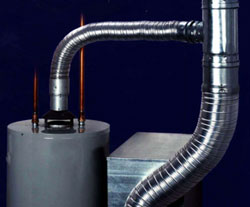
Categories
- Home
- Types Of Gas Ventilation
- Equipment Gas Ventilation
- Gas Appliances Ventilation
- Gas Boiler Ventilation
- Gas Heater Ventilation
- Gas Meter Ventilation Requirements
- Gas Pipe Ventilation
- Gas Range Downdraft Ventilation
- Gas Roof Ridge Ventilation
- Gas Stove Ventilation
- Gas Ventilation Grills
- Gas Ventilation Products
- Gas Ventilation Units
- Heating System Gas Ventilation
- Marine Oil And Gas Ventilation
- Mechanical Gas Ventilation Systems
- Mobile Home Gas Ventilation
- Natural Gas Ventilation
- Roof Ventilation
- Soil Gas Ventilation
- Type B Gas Ventilation
- Underfloor Gas Ventilation
- Gas Ventilation Explained
- Gas Ventilation Suppliers
Types Of Gas Ventilation
Providing proper ventilation within a home or a business is extremely important, especially because it deals with the safety of people. Agencies such as the EPA (Environmental Protection Agency) have established several laws and regulations that every individual ought to follow, and some of them are related to the proper ventilation of gas. Certainly, there are different types of gas ventilation and the decisive factor will rely mostly on the type of appliances that are installed in your building. Moreover, there are other factors that you must take into consideration, such as the size of the room and the requirements stated by the law.
Why is Ventilation Important?
One of the things that people often don’t think about is the fact that gas needs to be properly ventilated in order to combust. Certainly, you’re probably thinking that if gas doesn’t burn the proper way, then there won’t be any consequences but this is completely wrong. As a matter of fact, the different types of gas ventilation have become extremely important because if there is a lack of oxygen, then a very poisonous gas is produced. Moreover, large companies and factories are required by the law to install the proper ducts and types of gas ventilation systems to prevent this from happening. In addition, there are specific sizes of vents that need to be installed depending on the system that your building has.
Different Types of Gas Appliances
Before discussing the different types of gas ventilations that are available, it’s critical that you determine the type of gas appliance that you currently have. This will make it easier for you when it comes time to shop around for the proper gas ventilation system, and it will also give you a better idea on the requirements that you need to meet. Moreover, there are three basic types of gas appliances that will help you decide which type of gas ventilation to install, and they are:
- Room sealed–perhaps the safest among the different types of gas ventilation systems and appliances because air is released outside
- Flueless – among the most dangerous due to the lack of flue
- Open flue – depressurization through vents make ventilation easier
Handling Different Types of Gas Ventilation
The most important thing to remember about the different types of gas ventilation is the significance of oxygen in the room. In order for combustion to occur properly, there must be a specific amount of oxygen in the air, if not, then a hazardous gas will be produced which can be hazardous to the health of the people present. Moreover, handling gas ventilation properly can also help you save money in the long run, especially if you have a chimney or a fireplace in your home. For example, a standard size fireplace is capable of burning wood at considerably low temperature, which means that you will be using less gas in order to make it run. If the room is properly ventilated, then less gas than normal will be used to burn the same amount of wood.
